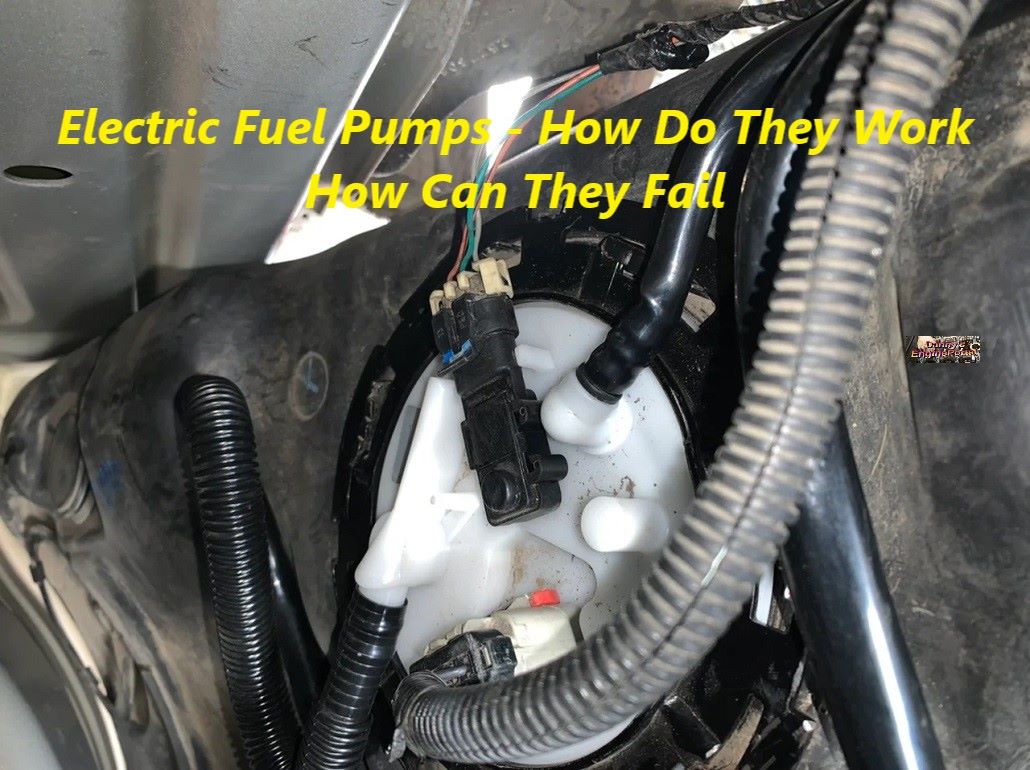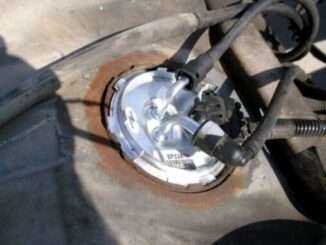
So, electric fuel pumps are fairly simple, but rely on many other systems, to function properly.
Above all, electric fuel pumps are responsible, for delivering pressurized fuel, from the fuel tank to the engine.
Consequently, when the ignition is activated, the (PCM) energizes a relay, that supplies voltage to the fuel pump.
Then, the motor inside electric fuel pumps, starts to spin and runs for a few seconds, to build pressure. Generally, you will find that electrical fuel pumps, are located in the fuel tank. And, use the fuel in the tank, to cool the pump and ensure a steady supply of fuel. Electric fuel pumps can be heard, as a quiet whine or hum in most cars. Most fuel pumps are built to last a long time. However, they don’t last forever. So, when in doubt, test it.
So, as the vehicle reaches high mileage, it is not uncommon for fuel pumps to require replacement. First, what really goes on when, you turn the key or press the start button.
Electric Fuel Pump – How Do They Work:
- First, fuel is drawn into the pump, through an inlet tube and filter system.
- Then, the fuel exits the pump, through a one-way check valve. Consequently, it maintains residual pressure in the system, when the pump is not running.
- After that, it is pushed toward the engine, through the fuel line and filter.
- The fuel filter traps any rust, dirt or other solid contaminants, that may have passed through the pump.
- Fuel then flows to the fuel supply rail, feeding individual fuel injectors.
- A fuel pressure regulator on the fuel rail, maintains fuel pressure. And, routes excess fuel, back to the tank.
- On newer vehicles with return less (EFI) systems. The fuel pressure regulator, is located in the fuel tank.
- And, there is no fuel return line, from the engine back to the tank.
- Fuel pumps run continuously, once the engine starts. And, continues to run, as long as the engine is running.
- The pump may run at a constant speed or variable speed, depending on engine load and speed.
- So, if the engine stalls, the (PCM) will detect the loss of the (RPM) signal, and turn the pump off.
Electric Fuel Pumps – How Can They Fail
Fuel pumps should last the life of the vehicle, but can fail because of:
- Contamination, inside the fuel system (dirt or rust)
- Fuel starvation, (running out of fuel)
- Overheating, (always driving with a low fuel level)
- Low voltage, (wiring problem)
- Overwork, (trying to overcome a restriction, caused by a plugged fuel filter)
The harder a pump works, the hotter it runs and the more amps it pulls through its power circuit.
So, when a electric fuel pump fails, it often just quits, without any warning. You are driving along fine one minute, then suddenly your engine stalls. Or, you come out to start your car in the morning, only to discover it cranks, but won’t start.
Fuel Pump – Failure Signs
So, how can you tell if a bad fuel pump is causing, your no start problem? One way is to listen for pump noise, after turning the ignition key on. No pump noise would tell you, the pump is not running. The fault may be, a bad pump or it could be, a bad fuel pump relay, fuse or wiring connection.
On most vehicles, failed electric fuel pumps, will not set any diagnostic trouble codes or check engine lights. The engine will crank normally, and it will have spark. But, it will not start, because of no fuel.
One way to tell if a no-start is due to no fuel, is to spray some aerosol starting fluid into the throttle. If the engine starts, runs a few seconds, then dies, then it has spark and compression. But, is not getting any fuel, from the fuel pump.
Failure Symptoms:
- Loud Whining Noise, From the Fuel Tank
- Difficulty Starting
- Engine Sputtering
- Stalling, At High Temperatures
- Loss of Power, Under Load
- Engine Surging
- Poor Fuel Mileage
- Engine Will Not Start
NOTE:
Overheating is among the top factors in, causing electric fuel pumps to wear out. Mounting the fuel pump, on the bottom of the tank helps. This keeps the pump cool, but only if there’s enough fuel, to keep the pump covered. Additionally, if the fuel level gets too low, the pump can begin, sucking in air with the fuel.
This creates further problems, by throwing off the correct mix of fuel, and air in the engine. For these and other, non-pump-related reasons, many experts recommend. Never, letting your fuel level get down, below a quarter tank.
Conclusion
Most times fuel pump problems, are hard to diagnose. Specially, because some symptoms, are similar to those produced by problems, in other systems.
So, by understanding the basic process of how the fuel pump works, you’ll have a better understanding of what happens. When a fuel pump goes out and how to recognize, when it’s happening.
BY DANNY BENDER




